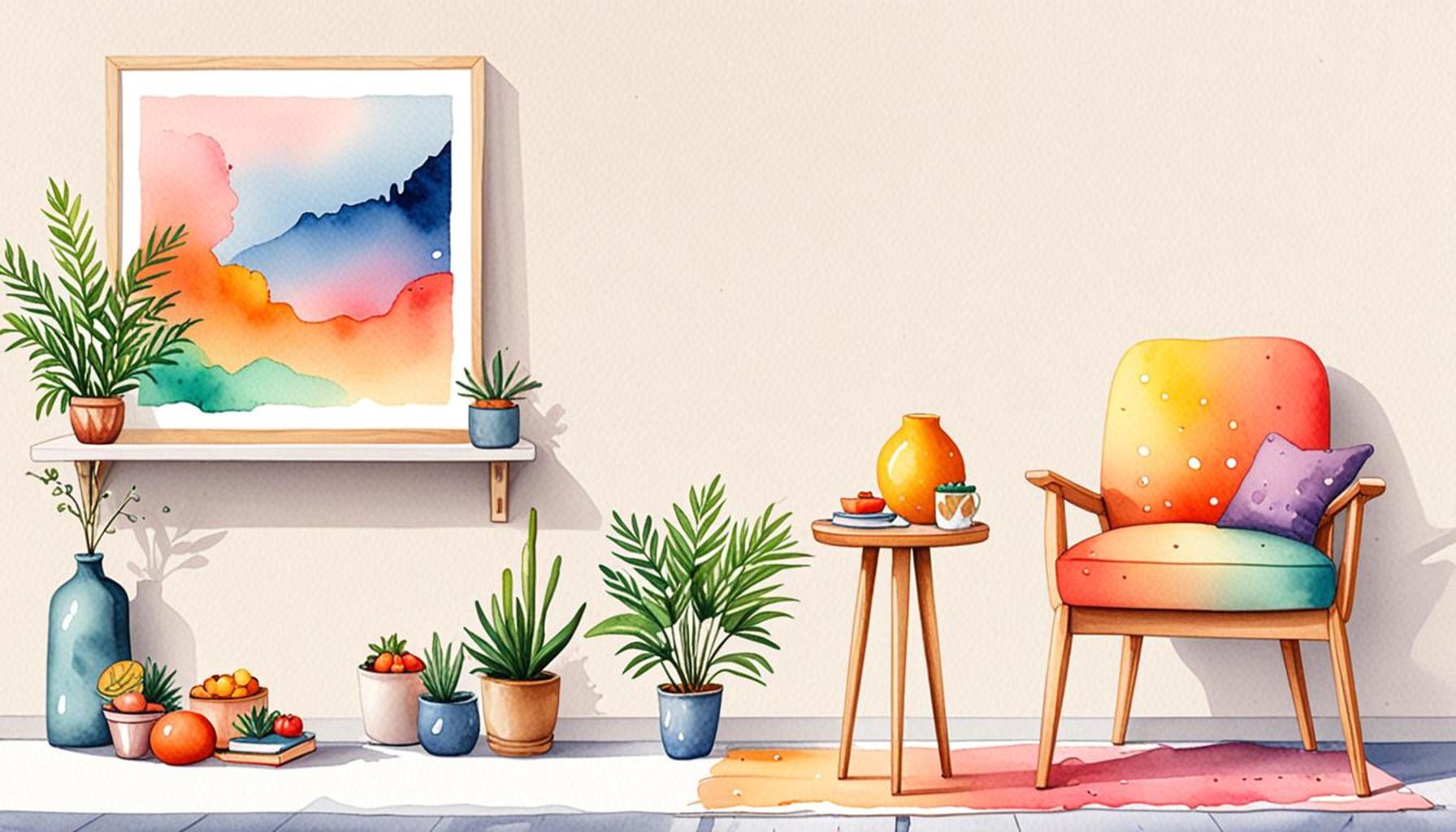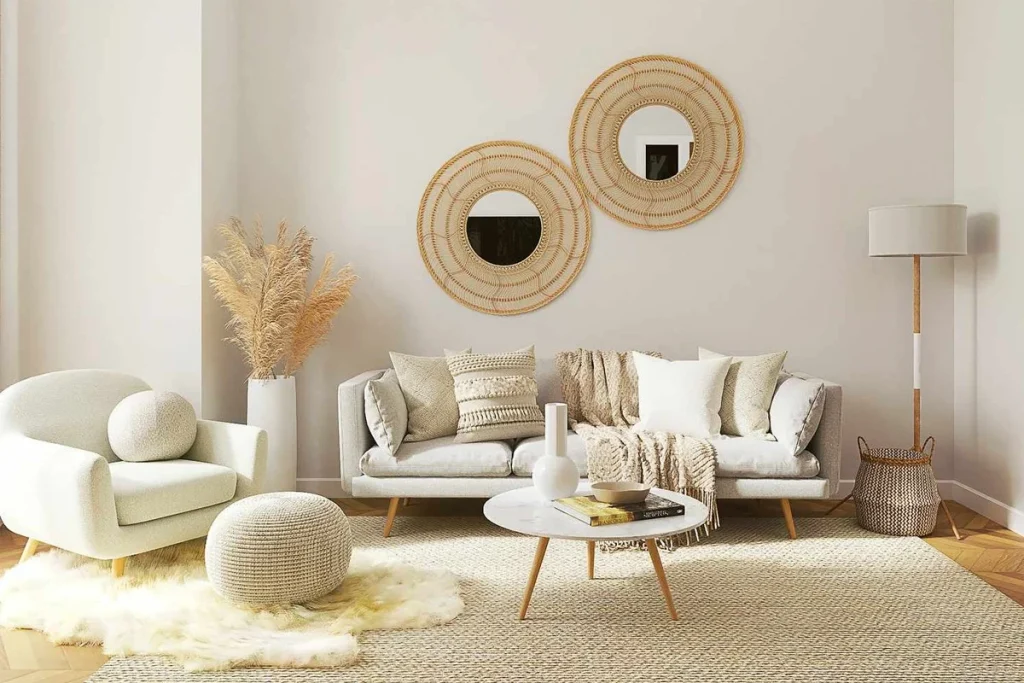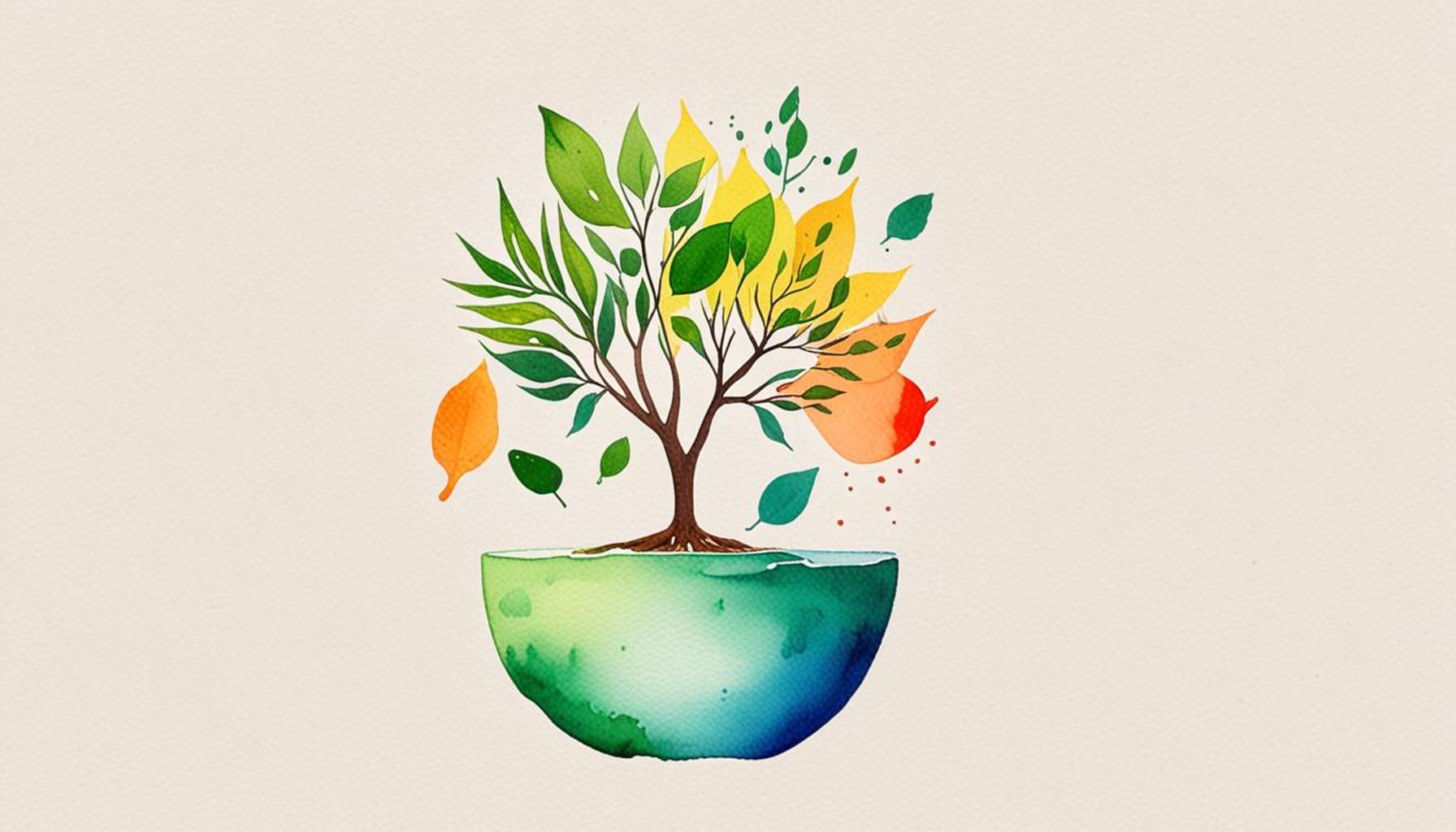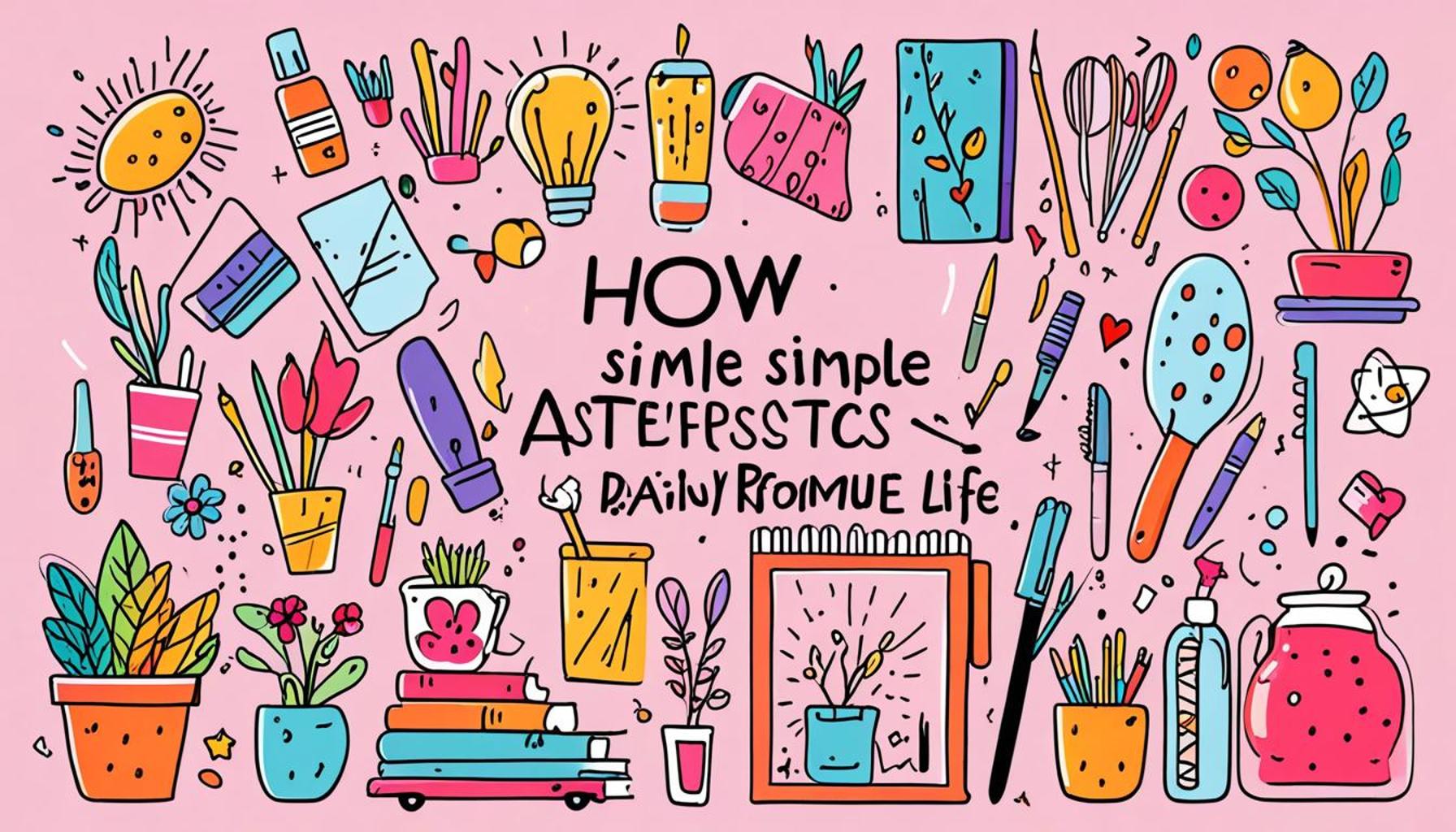The Simplicity in Decoration: Creating Pleasant Spaces with Simple Aesthetics

Discovering the Beauty of Minimalist Design
In a world that often feels cluttered and overwhelming, the concept of simplicity in decoration stands out as a soothing antidote. Creating pleasant spaces with simple aesthetics can transform not only your environment but also your state of mind. Embracing minimalism allows us to focus on what truly matters, fostering tranquility and clarity. This design philosophy is not just about less; it’s about more—more peace, more functionality, and more life amidst simplicity.
Minimalist design is characterized by its emphasis on the essentials. This aesthetic can be appreciated in various facets of our lives, from architecture to interior decoration, and it speaks to the growing popularity of sustainable living. For instance, the iconic work of architect Tadao Ando showcases how Japanese minimalism utilizes natural light, water, and simple forms to create peaceful retreats. Such environments nurture introspection and calmness, elevating daily experiences.
- Key elements of minimalist design:
- Neutral color palettes: Soft whites, greys, and beiges set a serene backdrop that helps to emphasize space rather than overwhelm it. For example, a living room adorned with muted tones can create a calming atmosphere that welcomes relaxation.
- Natural materials: Incorporating wood, stone, and metal gives a touch of warmth and authenticity to a design. Consider a kitchen featuring bamboo cabinetry that brings a natural element, inviting nature indoors.
- Functional furnishings: Each piece should serve a purpose without excess decoration. Multi-functional furniture, such as an ottoman that doubles as storage, is an excellent example of marrying beauty with utility.
- Open spaces: Allowing ample room for movement encourages a feeling of freedom. Open floor plans can foster interaction, whether in a modern loft or a suburban home, emphasizing cohesiveness.
- Benefits of simple aesthetics:
- Enhanced relaxation: A clutter-free environment promotes mental clarity, reducing stress and anxiety. Studies have shown that minimalist spaces can significantly improve mood and well-being.
- Increased productivity: In workspaces, simplicity helps minimize distractions. For example, a streamlined home office with clean lines and limited decorations can lead to better focus and efficiency.
- Timeless style: Minimalist design transcends trends; its elegance remains appreciated across generations, making it a wise investment for any homeowner.
- Ease of maintenance: Fewer items mean less cleaning and upkeep, which can free up time and mental energy for what truly matters—family, friends, and personal pursuits.
As you delve deeper into the world of simple decoration, consider how each choice you make can contribute to a harmonious atmosphere. Every room in your home—from the tranquil bedroom that invites rest to the functional kitchen that inspires culinary creativity—can benefit from minimalist principles. Think about spaces like your living room, kitchen, or even your home office—evaluate where simplicity can lead to improvement. By prioritizing clarity and function over excess, you unlock the potential for truly beautiful spaces that reflect a mindful lifestyle, ultimately enriching your daily experiences.
DIVE DEEPER: Click here to discover the benefits of digital
Embracing Minimalism: The Foundation of Elegant Spaces
Minimalist design isn’t just a passing trend; it has evolved into a lifestyle choice that resonates with many. At its core, simplicity in decoration emphasizes the idea that “less is more.” This philosophy revolves around the belief that stripping away the non-essential can lead to the creation of exquisite spaces that are both inviting and functional. As we explore the depths of this design approach, it is essential to consider how it can be practically applied to our everyday lives.

To initiate your journey into minimalist space design, it’s crucial to understand its fundamental principles. A minimalist approach begins with a thoughtful selection of items. Every element should serve a purpose while contributing to the overall aesthetic. This idea invites us to question the necessity of each piece within our homes, leading to more intentional living. By closely examining what we truly need, we eliminate duplicates and decor that does not resonate with our sense of tranquility.
- Curated collections: Instead of crowding your shelves with various knickknacks, consider opting for a few meaningful pieces that tell a story. This could be a collection of books that inspire you or art pieces that evoke emotion. The fewer, the better, as each item can become a conversation starter.
- Functional spaces: Every room in your home should not only look good but also serve a needed function. For example, a home office should boast ergonomic furniture that encourages productivity while maintaining a minimalistic design.
- Layered textures: While a minimalist decor style often leans towards a monochromatic palette, introducing variations in textures—like a soft wool throw or a rattan basket—serves to enrich the visual aesthetic without increasing clutter.
- Mindful color choices: Utilizing a limited color palette can simplify the visual landscape of your space. Select a few complementary colors that harmonize well and consider incorporating these hues in different textures, from cushions to wall paint.
Transitioning to minimalist decoration offers numerous benefits, both aesthetically and psychologically. Research has shown that a simple and decluttered environment can lead to improved mental well-being, where enhanced focus and relaxation thrive. Studies reveal that individuals in minimalist spaces report lower levels of stress and a heightened sense of clarity—a perfect setting for rejuvenation and creativity.
Moreover, embracing simplicity cultivates a sense of sustainability and mindfulness. With a growing emphasis on environmentally friendly practices, minimalist design encourages the use of high-quality, sustainable materials that endure. By investing in fewer, better items, you reduce your overall environmental impact while elevating your living space.
As you delve further into the potential of minimalist design, reflect on areas of your home that could benefit from this intentional approach. From organizing your closet to reimagining your living room, each decision to simplify opens a world of possibilities for creating environments that are not only visually appealing but also serve to enrich your everyday living.
| Category 1 | Category 2 |
|---|---|
| Minimalist Design | Promotes clarity and focus through fewer elements. |
| Use of Natural Materials | Creates a calming environment while enhancing durability. |
| Light Color Palettes | Improves natural light reflection, making spaces feel larger and airier. |
| Functional Spaces | Encourages multitasking with less clutter, maximizing efficiency in everyday life. |
The theme of “The Simplicity in Decoration” strongly emphasizes the philosophy of using simple aesthetics to promote not just visual appeal, but also emotional well-being. By adopting a minimalist design approach, one fosters an environment that exudes calmness and clarity. This principle is vital in today’s fast-paced world, where distractions abound. Moreover, incorporating natural materials such as wood and stone not only enhances the aesthetic value of a space but also contributes to its durability and sustainability. These materials resonate with the innate human desire to connect with nature, creating a sanctuary at home.Applying light color palettes can further amplify the benefits of simple decoration. These tones reflect natural light effectively, allowing spaces to appear not only more expansive but also inviting and warm. When every color and texture has a purpose, the result is a harmonious flow that promotes both comfort and functionality.Additionally, by designing functional spaces that prioritize usability, individuals can maintain an organized lifestyle. This commitment to practicality ensures that each element within a space has a role while reducing visual clutter, ultimately facilitating a sense of relaxation and efficiency in daily activities. Delving deeper into the nuances of simple decoration can reveal unexpected insights and encourage a lifestyle that marries aesthetics with purpose.
DISCOVER MORE: Click here to enhance your daily routine
Incorporating Nature: The Art of Biophilic Design
As we delve deeper into the realms of simple aesthetics in decoration, it becomes evident that the natural world plays a pivotal role in enhancing our living spaces. Biophilic design is an inspiring approach that focuses on bringing elements of nature indoors, ultimately fostering a sense of connection to the environment while maintaining simplicity. By incorporating natural materials and forms, we create spaces that evoke tranquility and beauty, aligning perfectly with the minimalist philosophy.
One of the primary ways to achieve this is through the use of natural materials. Choosing items made from wood, stone, or clay not only adds texture but also fosters a sense of warmth within your home. For instance, a reclaimed wood coffee table can serve as a stunning centerpiece while contributing to sustainability. The key is to source materials that are authentic and unrefined, as their inherent imperfections can transform a space into something uniquely beautiful.
- Plant life: Introducing greenery into your environment acts as a living decor element. Whether it’s a small potted succulent on your windowsill or a striking floor plant in the corner, these organic pieces enhance air quality while adding visual interest. Additionally, plants can bridge indoor and outdoor spaces, complementing minimalist designs by maintaining a connection to nature.
- Natural light: The impact of natural light should not be overlooked. Utilizing large windows or strategically placed mirrors can help amplify sunlight, making even the smallest of spaces feel more open and inviting. Sunlight has a rejuvenating effect, enhancing mood and well-being while reinforcing a simple, airy aesthetic.
- Nature-inspired colors: Infusing your interiors with earthy tones can mirror the beauty found in nature. Warm greens, soft browns, and gentle blues can create a soothing background that complements minimalist decor. This harmonious palette can also be an inviting backdrop for more vibrant accents when desired.
Furthermore, integrating biophilic elements provides profound psychological benefits. Research by the University of Queensland highlights that exposure to nature positively influences mood, reduces stress, and enhances cognitive function. These findings encourage us to reimagine our living spaces, making nature a focal point rather than an afterthought.
The journey toward achieving pleasant spaces with simple aesthetics doesn’t end with incorporating nature; it also extends into the realm of personal expression. While minimalism advocates for the elimination of excess, it thrives on the inclusion of personal flair within a curated environment. Art, personal photos, or handmade pieces can elevate a minimally decorated space, imbuing it with character and warmth. The challenge lies in selecting items that align with your personal ethos and contribute positively to the overall ambiance.
Furthermore, experimenting with open-concept layouts can also support minimalist principles while enhancing functionality. By removing unnecessary barriers between spaces, you create a fluid environment that feels larger and more connected. An open layout encourages collaboration and movement, making it easier to entertain while maintaining the tranquility that minimalism advocates.
In essence, the simplicity in decoration is not merely about reduction; it’s about making thoughtful selections that resonate with your lifestyle. By incorporating biophilic elements, embracing nature, and personalizing your space, you embark on a journey toward creating a home that is both peaceful and reflective of your identity. This holistic approach to minimalism leads us not only to aesthetic beauty but also to enriching our lives in meaningful ways.
DISCOVER MORE: Click here to learn about minimalism’s effects on mental health
Conclusion: Embracing the Beauty of Simplicity
In summary, the simplicity in decoration is not just a trend; it’s a mindful approach to creating spaces that nurture the soul and reflect our unique identities. By focusing on natural elements, incorporating personal touches, and enhancing functionality through open-concept designs, we can transform our living environments into serene sanctuaries. This exploration of minimalism encourages us to embrace fewer, but more meaningful items that resonate with our lifestyles and aspirations.
Moreover, the integration of nature through biophilic design offers emotional and psychological benefits that can enhance our well-being. Surrounding ourselves with greenery and natural light not only elevates the aesthetic appeal of our spaces but also fosters a sense of calm and connection to the world outside. Such elements remind us of the beauty found in simplicity, while also serving as a counterbalance to our often chaotic lives.
Ultimately, creating pleasant spaces with simple aesthetics is an invitation to reflect on what truly matters in our homes. As we curate our environments, let us prioritize quality over quantity, authenticity over trendiness, and connection over excess. This philosophy enables us to craft harmonious spaces that not only look good but feel good, resulting in homes that are welcoming, enriching, and profoundly personal.


